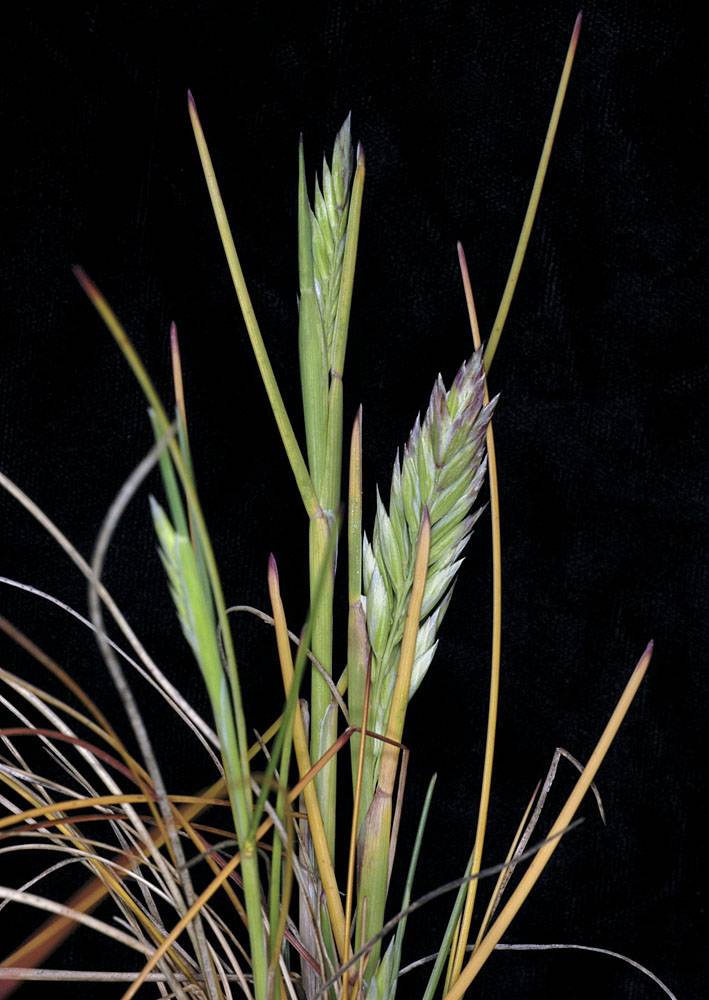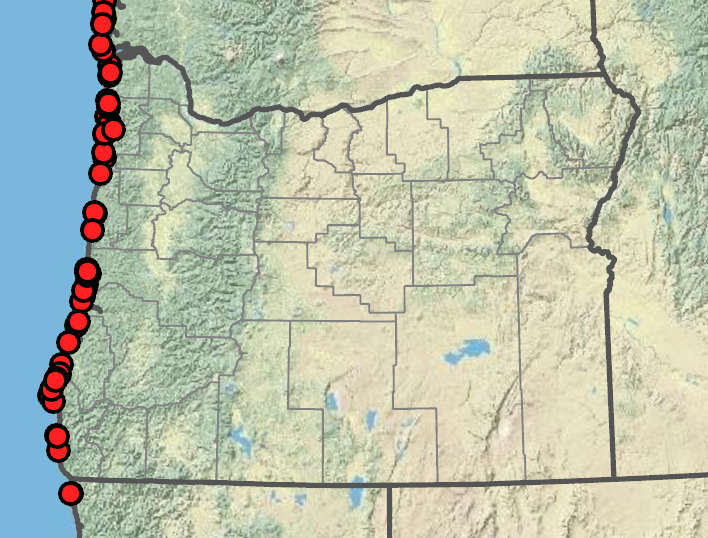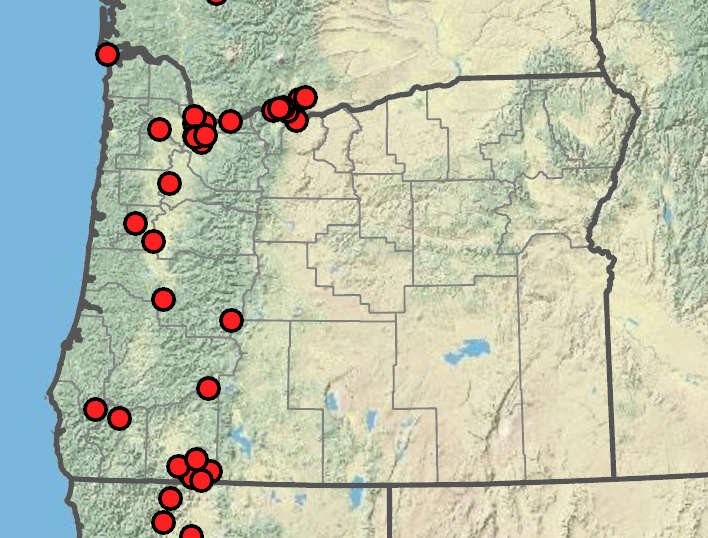Poa macrantha
Poa howellii
seashore bluegrass
Howell's bluegrass
mainly intravaginal; some extravaginal.
intravaginal.
sheaths closed about 50% of their length, bases of basal sheaths glabrous;
collars smooth, glabrous;
ligules 1–5 mm;
blades moderately to densely scabrous or minutely hairy on and between veins, blades of tillers to 30 cm;
cauline blades involute; somewhat arcuate, 2–4 mm wide; uppermost blades 1–10 cm.
sheaths closed 50% or more of their length;
ligules 1.5–5(10)mm, blades of tillers flat, 1–7(10) mm wide, finely scabrous;
cauline blades 2–10 cm.
erect; ovoid to lanceolate, contracted, often interrupted, 3–15 cm;
spikelets 15–80;
branches 1-2; erect, 1–6 cm; stiff, with 3–17 spikelets.
erect, eventually open, 10–25(30)cm; the branches eventually spreading or reflexed.
9–17 mm; to 3 times as long as wide;
florets 3–6(10).
(2)4– 6 mm;
florets 2–5;
rachilla internodes about 1 mm; smooth, softly puberulent or occasionally glabrous.
broadly lanceolate, subequal to adjacent florets;
keels sparsely scabrous near tips;
lower glumes 3-veined;
upper glumes usually more than 7 mm, 3–5-veined.
slightly unequal;
keels and sometimes lateral veins scabrous;
lower glumes 1–3-veined.
usually with a line of crisp to sinuous hairs around the base of the lemma, sometimes glabrous or with diffuse; short; cobwebby hairs.
with sparse cobwebby hairs on at least some florets.
lanceolate; (6)7.5–11 mm, 5–7(11)-veined, distinctly keeled;
keels and marginal veins, sometimes also intermediate veins; short-villous to softly puberulent; area between veins smooth to scabrous, glabrous or softly puberulent;
tips acute.
lanceolate to narrowly lanceolate, 2.5– 3.5 mm, distinctly keeled, evenly crisply puberulent near the base, finely scabrous distally;
margins narrowly hyaline;
tips narrowly acute, rarely purple.
vestigial and 0.1–0.2 mm, or (2)3–4(5)mm.
0.2–1 mm.
stout, 1.5–2 mm thick;
nodes terete, 0(1) exserted.
nodes terete.
=28.
Poa macrantha
Poa howellii
Coastal sand dunes. 0–100m. Est. CA, WA; north to AK. Native.
Open, often moist woods and bottomlands, often with moss or boulders. 0–1100m. Casc, ECas, Sisk, WV. CA, WA; north to British Columbia. Native.
Rob Soreng, Barbara Wilson, Richard Brainerd, Nick Otting
Rob Soreng, Barbara Wilson, Richard Brainerd, Nick Otting
- Local floras:
BC,
CA,
OR,
WA
- Local Web sites:
CalFlora,
CalPhotos,
Flora NW,
PNW Herbaria
WildflowerSearch
iNaturalist (observations)
USDA Plants Database
- LBJ Wildflower Center
- SEINet
- Plants of the World Online
- Encyclopedia of Life
- Wikipedia
- Google Image Search
- Local floras:
BC,
CA,
OR,
WA
- Local Web sites:
CalFlora,
CalPhotos,
Flora NW,
PNW Herbaria
WildflowerSearch
iNaturalist (observations)
USDA Plants Database
- LBJ Wildflower Center
- SEINet
- Plants of the World Online
- Encyclopedia of Life
- Wikipedia
- Google Image Search




